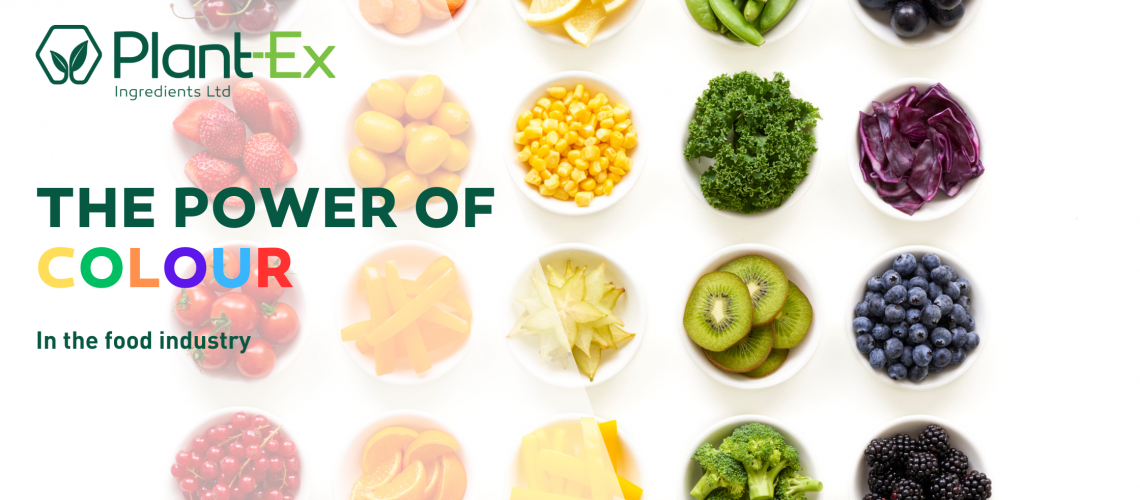Have you ever noticed how a visually appealing dish can instantly make your mouth water, even before you take the first bite? The captivating colours of food have a profound impact on our perception of taste, and the impact of food colour on consumer perception should not be underestimated.
From vibrant greens to luscious reds, each colour carries a subtle message that can enhance consumers’ experience of flavour and make your product stand out. Plant-Ex have a wide portfolio of colours, suited to all applications. Have a read of our blog below which uncovers how colour plays a vital role in consumer purchasing and ultimately drives your sales.
Red
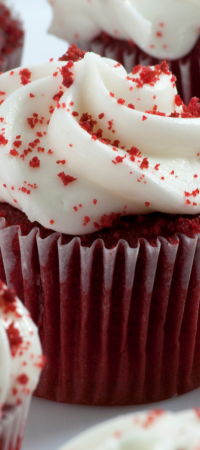
The colour red is known to stimulate the appetite. It can make food and beverages appear more enticing, making consumers more eager to indulge. The right red can make your product stand out on the shelves.
Red often signifies ripeness and juiciness, making it a great option to pair alongside Plant-Ex’s fruity flavours for a fresh and naturally sweet perception. Think of ripe strawberry jam or a succulent cherry-flavoured cake.
Deep red colours are frequently linked to indulgence, luxury, and celebration. Red velvet cakes, rich red wine, and decadent ganache-filled chocolates are all examples of how red can enhance the perception of indulgence and create a feeling of luxury and opulence.
In the context of spicy or hot savoury foods, the colour red may indicate a higher level of heat or intensity – great for a strong spicy flavour bomb, making your product stand out.
Plant-Ex’s flavour recommendations to pair alongside red colours:
- Strawberry
- Cherry
- Watermelon
- Chilli
- Wine
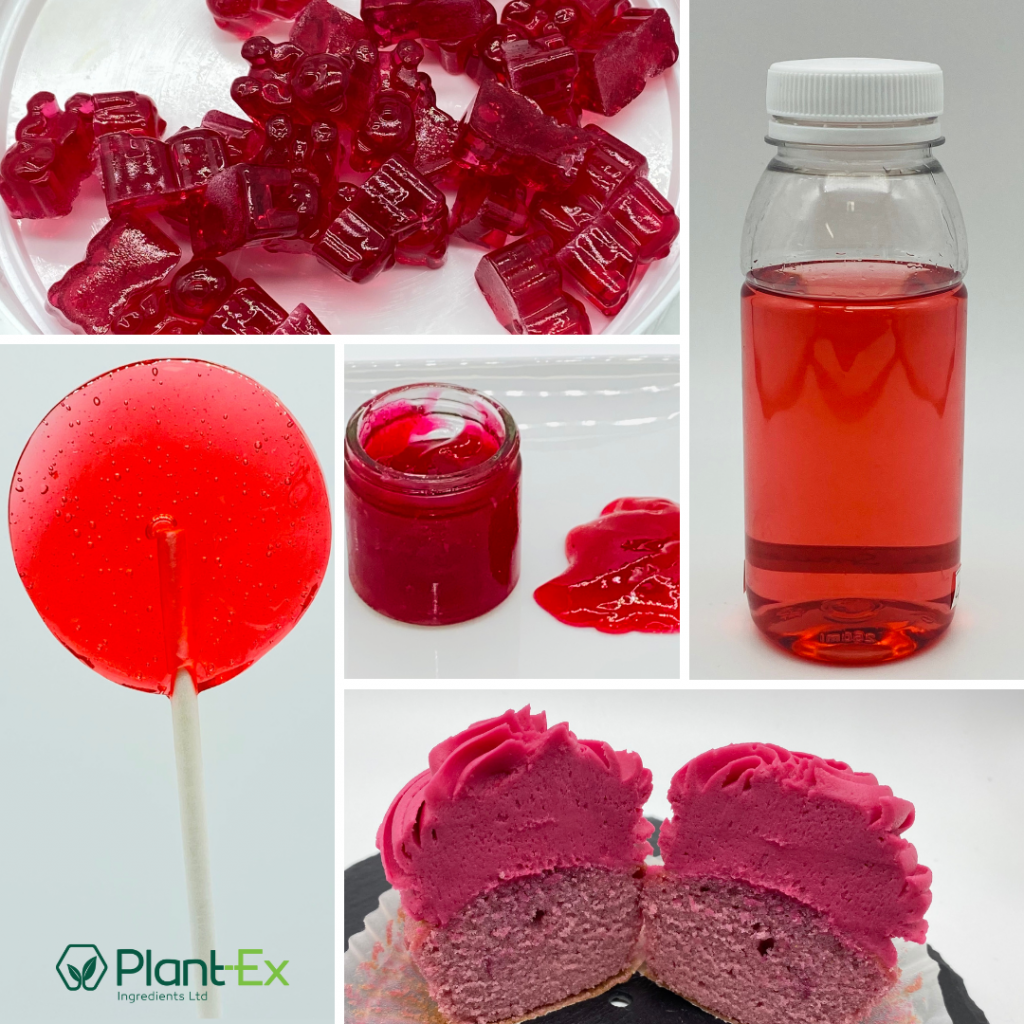
For more technical information on Plant-Ex’s range of red colours, read our blog here.
Orange
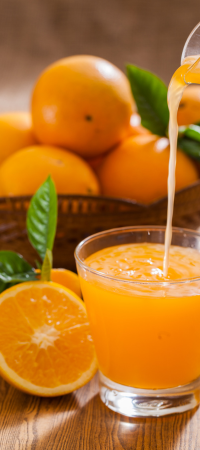
The colour orange is also known to act as an appetite stimulator, making your product more appealing to consumers, even before the first taste.
Orange is a comforting colour with its association with warmth and joyfulness, encouraging customers to indulge in orange-coloured foods. It is also associated with autumnal foods, making it perfect for the approaching autumn months. To create an element of warmth, consider adding Plant-Ex’s orange colour to a pumpkin spiced latte or a chocolate orange cupcake.
Moreover, orange is also related to being energising and optimistic, much like a fresh glass of orange juice. A bright orange colour will make an orange juice seem sweeter and fresher… the brighter, the sweeter!
Flavour recommendations to pair alongside orange colours:
- Orange
- Blood Orange
- Pumpkin
- Carrot
- Sweet Potato
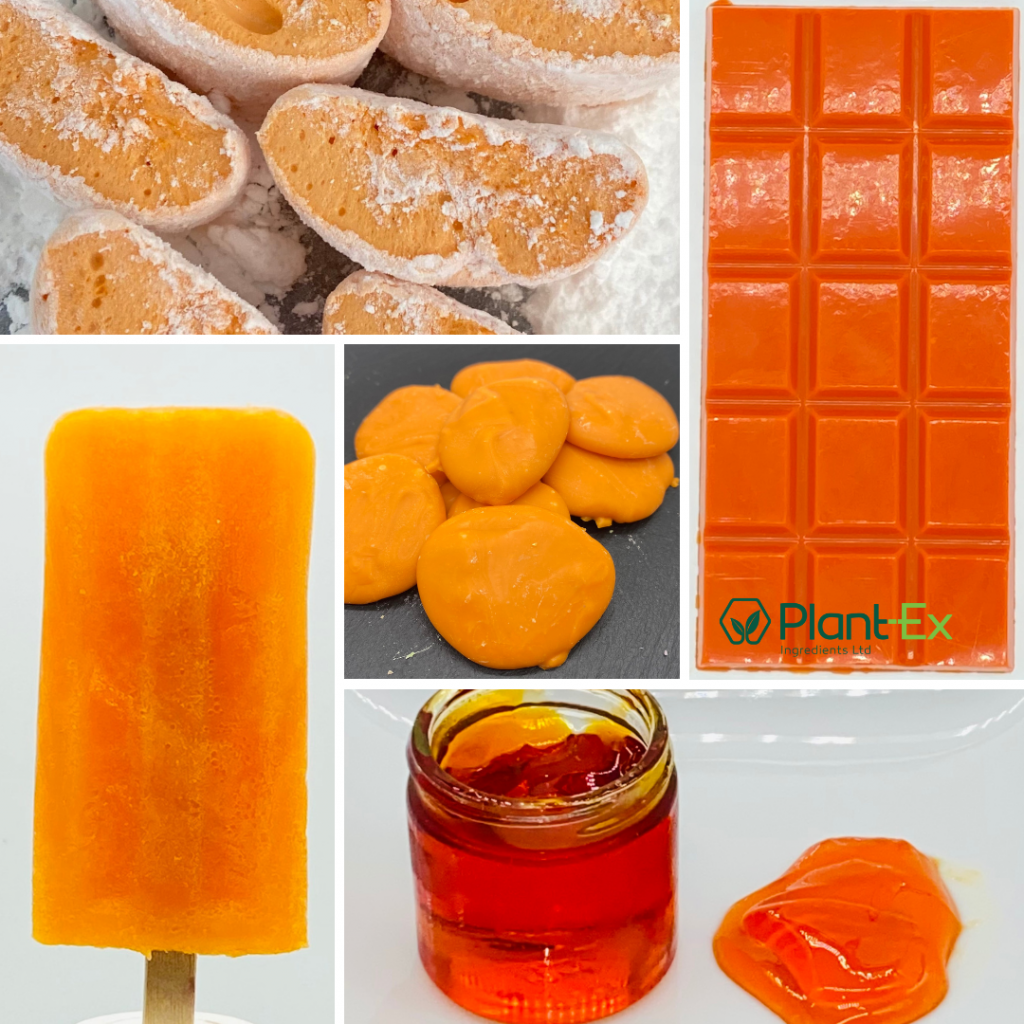
For more technical information on our orange colours, read our blog here.
Yellow
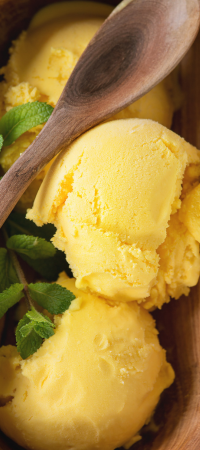
Yellow is the happiest of colours and can bring positivity to anyone’s day. Think of a fresh homemade lemonade on a summer’s day or a fruity mango sorbet to cleanse your palette.
The happiness of the colour makes yellow foods appealing to consumers. There’s no doubt that a lemon drizzle cake with subtle yellow icing is bound to make anyone feel happier.
In a savoury context, yellow is used in cheeses to enhance our flavour perception. A rich cheddar cheese or a smoky American cheese in a juicy burger is made more enticing through its creamy yellow colour. No wonder cheese and pineapple sticks are such a popular snack!
Flavour recommendations to pair alongside yellow colour:
- Lemon
- Mango
- Pineapple
- Banana
- Cheese
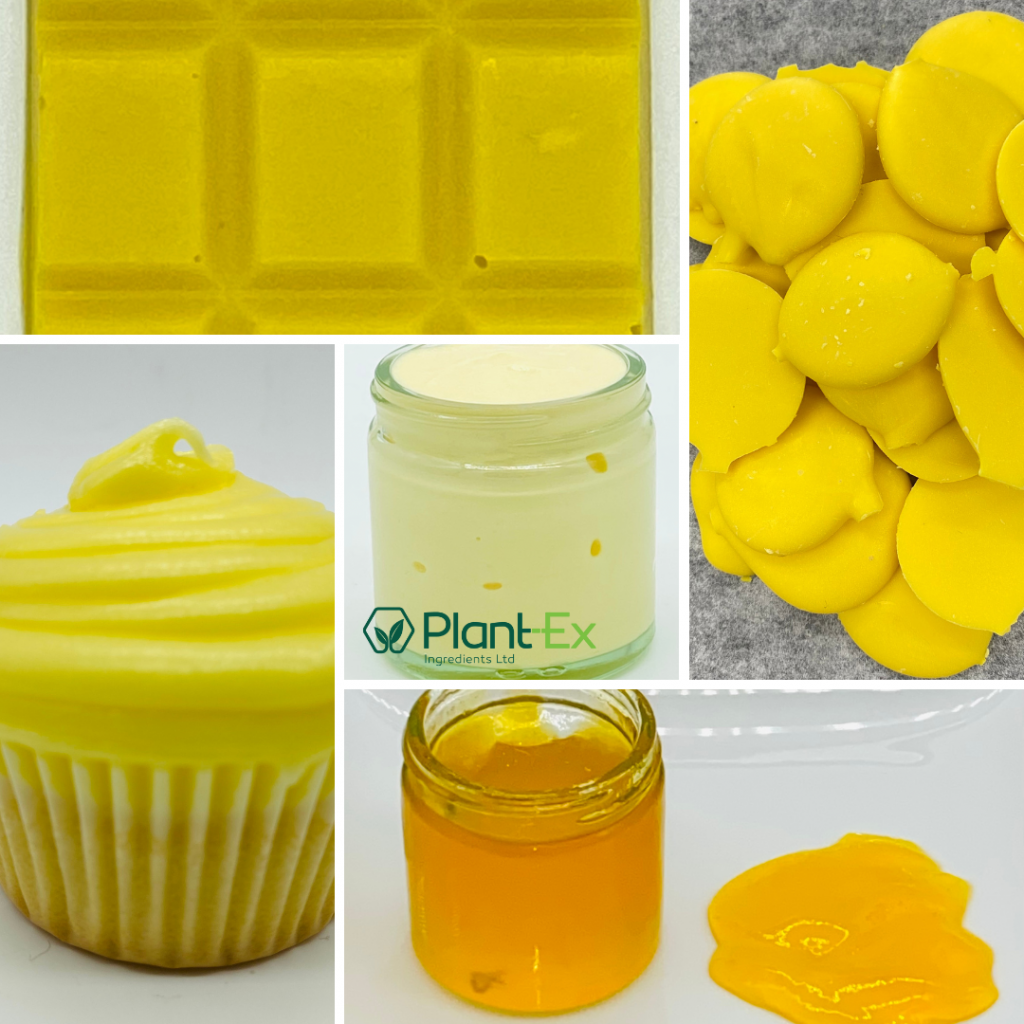
For more technical information on our yellow colours, read our blog here.
Green
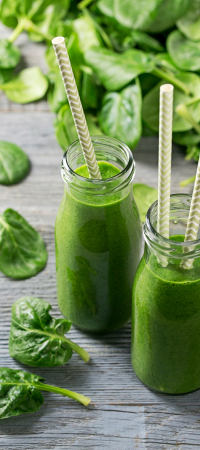
Green is a symbol of health and well-being, and it is, therefore, crucial to use the colour green to highlight the healthiness of a product. It is often associated with nutritious and healthy foods – a great way to entice customers and tailor to health-conscious consumers.
Adding Plant-Ex’s green colours are a great way to jump onto the rise in healthy foods. Green powders and juices are trending at present, so adding a natural green colour would be great for either of these applications!
New crazes such as Matcha tea and spinach and kale juices are examples of trendy green products. Keep things cool with a green colour.
Green is also associated with being environmentally friendly which can help make your product stand out to conscious consumers.
Flavour recommendations to pair alongside green colours:
- Lime
- Apple
- Mint
- Matcha
- Kiwi
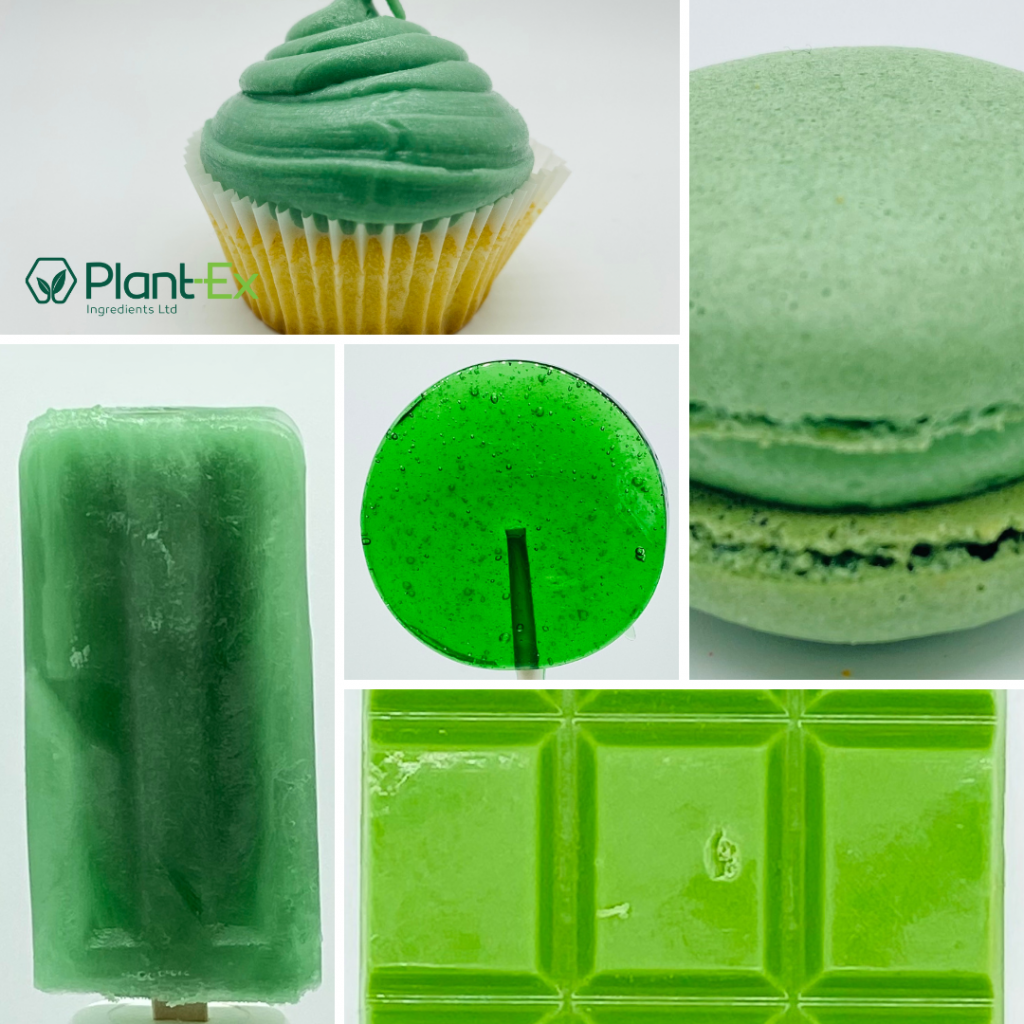
For more technical information on our green colours, read our blog here.
Purple:
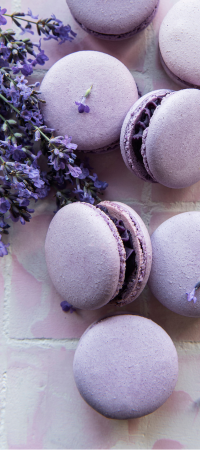
The colour purple has an element of fantasy and mystery which can be exciting for consumers. The rareness of the colour in food makes it unique and stimulating which is great when creating products to stand out on the shelf. Just think, a blackberry muffin or a mixed berry-flavoured drink is always going to win in a crowd of foods.
Additionally purple is associated with luxury and lavishness which can make your product stand out as being high-quality to customers. For example, consider a lavender shortbread biscuit, which has an extravagant feel to it simply from the lavender.
Flavour recommendations to pair alongside purple colours:
- Lavender
- Plum
- Grape
- Elderberry
- Blackberry
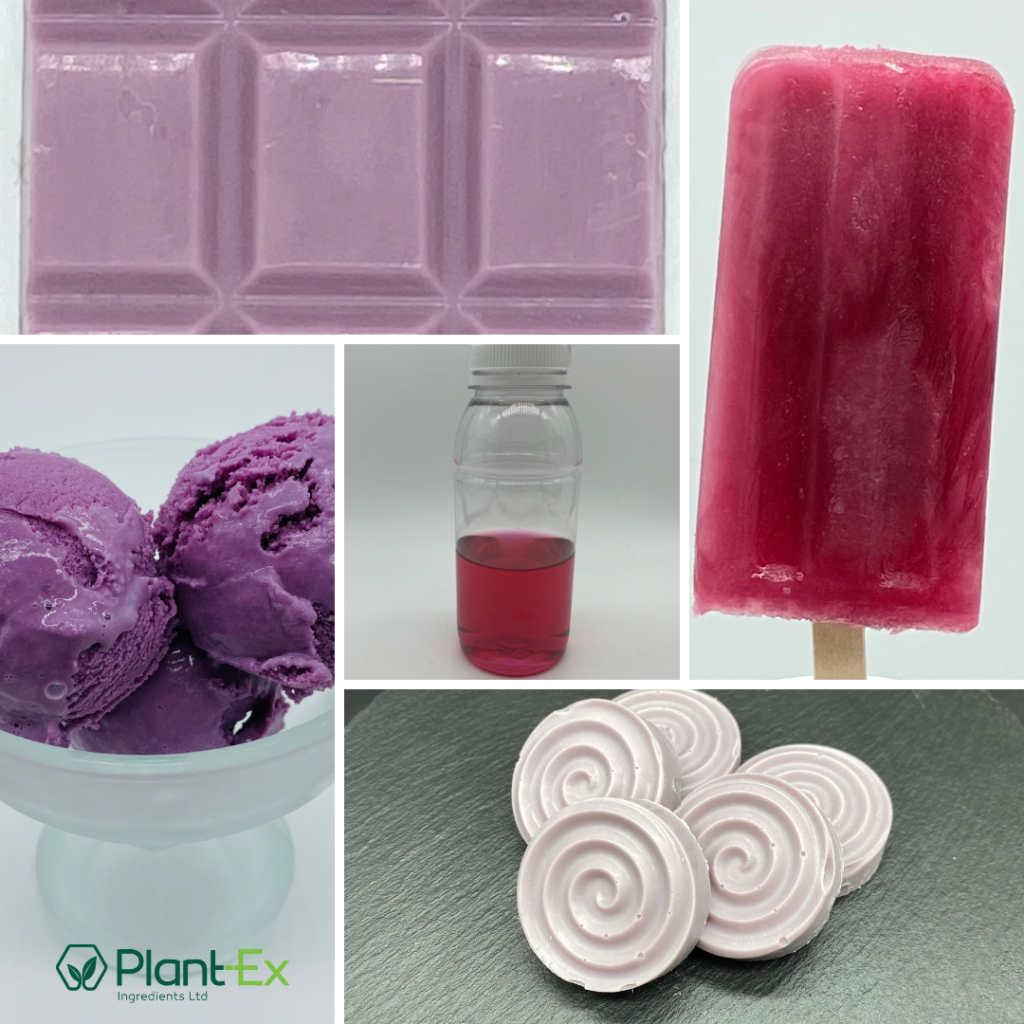
For more technical information on our purple colours, read our blog here.
Blue:
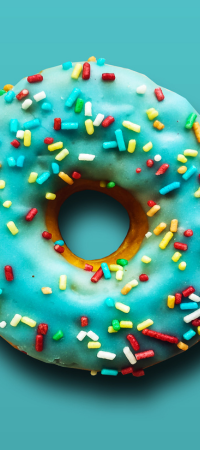
Consumers are drawn to vibrant and visually appealing food and beverage products, especially blue due to how rare it is within foods. Blue colours in food have had a bad rep for a number of years, however, spirulina is natural meaning there are no negative side effects upon consumption!
Blue also conveys a sense of confidence making it an ideal colour choice for energy drinks, and bold-flavoured foods and beverages. For example, adding blue to your bubblegum-flavoured drink, slush puppie or sorbet is a great way to make your product eye-catching to consumers. Or better yet, think of a bright blue, blueberry-flavoured protein shake.
On the other side blue conveys feelings of calmness and relaxation due to its association with water, and therefore there has been a recent surge in the use of the colour blue in healthy food products. Flavoured waters with notes of berries are a popular beverage because of its hydrating and healthy characteristics.
Flavour recommendations to pair alongside blue colours:
- Bubblegum
- Blueberry
- Blue raspberry
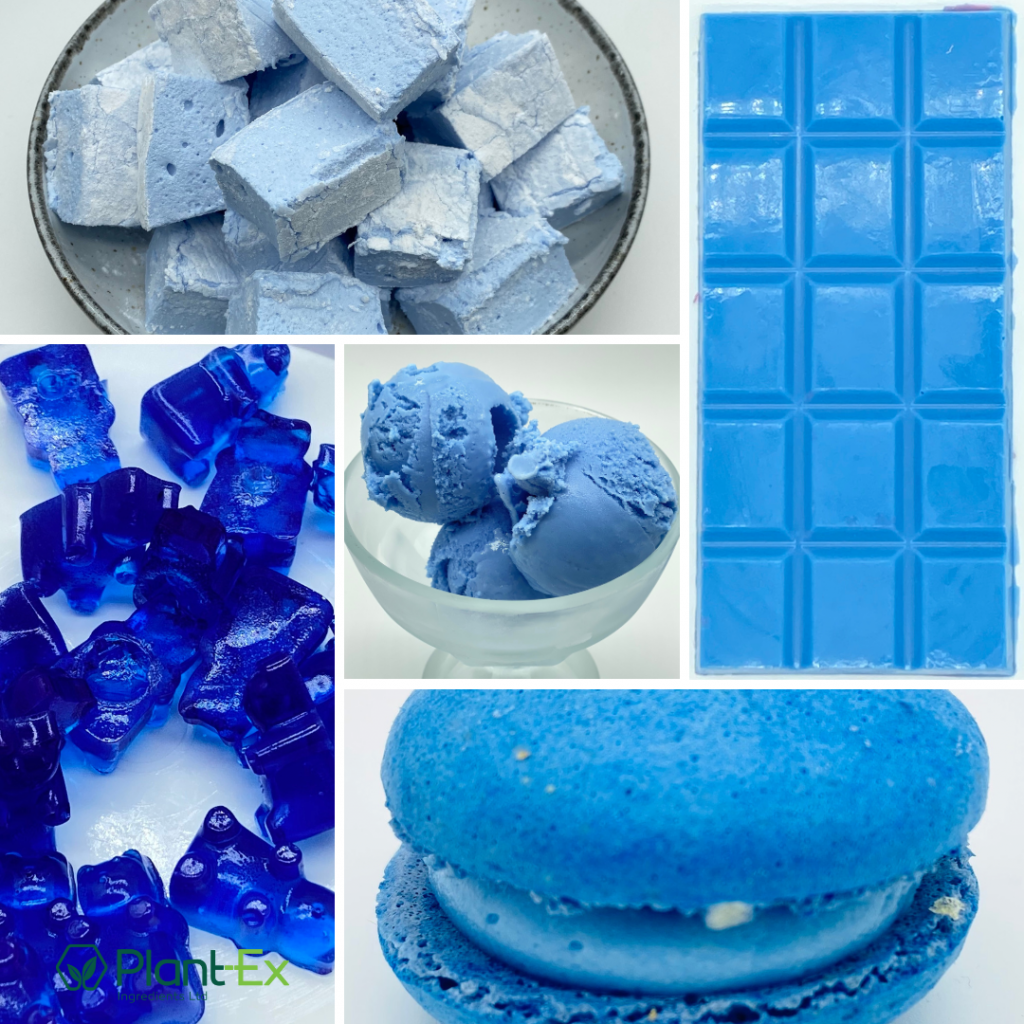
For more technical information on our blue colours, read our blog here.
Brown:
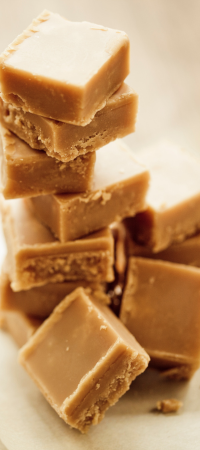
Brown promotes the idea of nature and being down-to-earth, primarily due to its earthy tones and natural feel. This portrays the idea that brown products are environmentally friendly and sustainable which makes your products attractive to customers.
In the food and beverage industry, brown colours convey rich flavours such as chocolate and coffee. Think of a rich chocolate fudge cake which contains intense brown colours and flavours or a coffee cupcake with hazelnut icing.
Adding an element of chocolate, fudge or caramel to your sweet treat can instantly make it a delectable and moreish product that your customers will not want to stop eating.
Flavour recommendations to pair alongside brown colours:
- Cola
- Fudge
- Coffee
- Chocolate
- Hazelnut
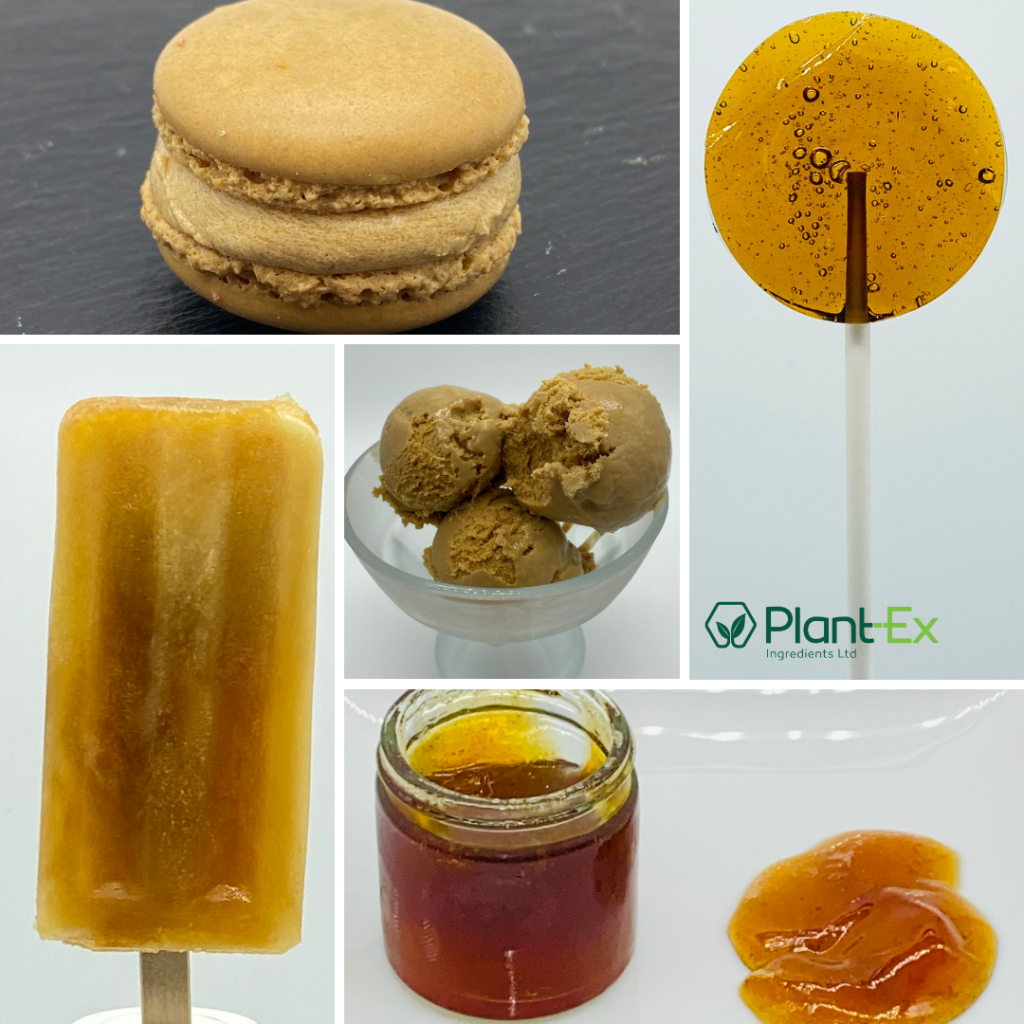
Black:
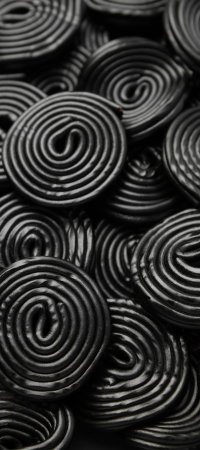
Black can be used to signify flavour intensity. It is often used on drinks packaging such as energy drinks to highlight the intensity of the flavour within. Black is also associated with elegance, enhancing your product to the next level.
In the food industry, when people see the colour black, they immediately think of liquorice. However, there are lots of other ways to incorporate the colour black into your final products. For something a little bit different to the traditional vanilla ice cream, the colour black transforms it into a more elegant and stand-out product.
The colour black can also be used for creative twists on generic products such as during the Halloween period for a spooky element. For example, a black cupcake with blackberry icing can turn a simple sponge into an exciting and occasion-ready product.
Flavour recommendations to pair alongside black colours:
- Liquorice
- Blackberry
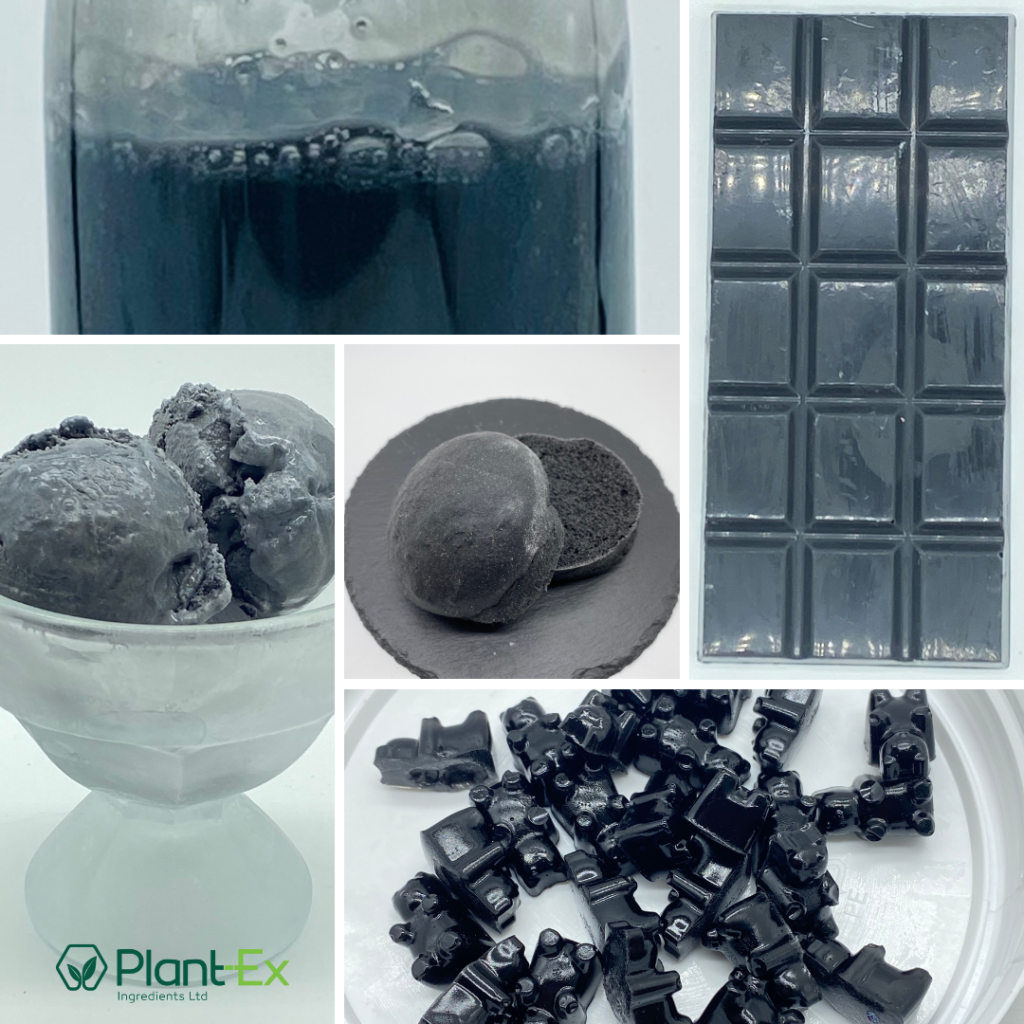
White:
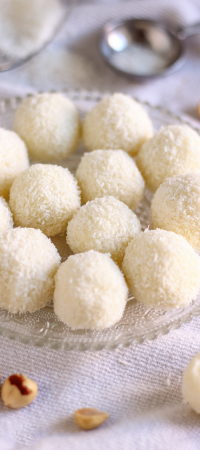
White is associated with simplicity and sometimes keeping it simple is best. A fresh white scoop of vanilla ice cream or coconut sorbet or even a white vanilla cake at a wedding creates a sense of purity and delicacy. Simplicity does not have to mean lacking in flavour, a strong coconut flavour can transform a product.
The colour white is also related to cleanliness and freshness which is appealing to customers due to its natural character. Often mint flavoured products, such as chewing gums or mints, are coloured white to portray the freshness of the mint… the brighter the white, the greater the perceived freshness.
Read more about Plant-Ex’s colours including our white calcium carbonate here.
Flavour recommendations to pair alongside white colours:
- Coconut
- Vanilla
- Mint
It is important to note that the colours above will react differently depending on the application. This is dependent on the acidity, light, temperature etc. To know more about this, please don’t hesitate to get in touch today with our technical team at sales@plant-ex.com
